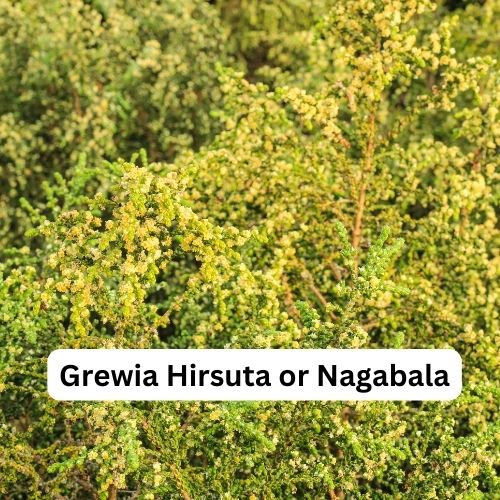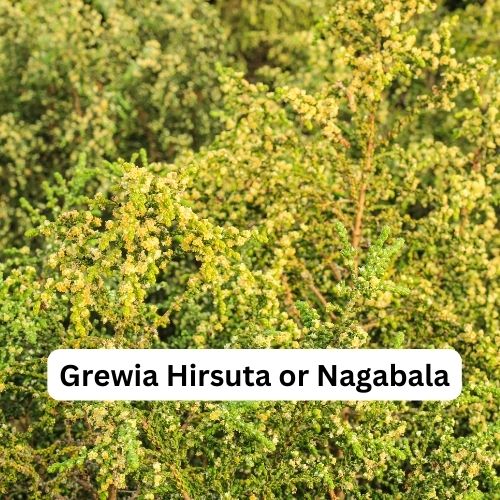
Nagbala or Grewia Hirsuta - Benefits, Medicinal Properties, Uses and Side Effects
Share
Botanical name of Nagabala
Grewia Hirsuta

Regional names of Nagabala
The plant known as Grewia Hirsuta is a member of the Tilaceae family. It goes by several common names, such as Gulasakari, Kukuranda, Kukurbica, Setarepari, Setapetu, Setajaraka, Govali, Jibilike, Tavidu, Gikkudippe, Huktapata, Nagabala, Guda sharkara, and Gangeruki. In English, it is referred to as Veronicalolia. In Hindi, it is known as Kukurbicha.
Native/ Occurance of Grewia Hirusta
This particular plant species is commonly found in various regions of East Asia, including India, Sri Lanka, Thailand, Myanmar, and Vietnam. In India specifically, it is primarily found in the Vindhya regions such as eastern Uttar Pradesh, Bihar, and Rajasthan. Its typical habitat consists of mixed deciduous forests and dry evergreen forests.
Botanical Description
Grewia Hirsuta is a shrub characterized by its coarse gray and brown hairy branches. The stalks of its leaves measure 3 mm in length. The lance-shaped leaves have a length ranging from 6 to 14 cm and a width of 2 to 3.5 cm. When dried, these leaves take on a black-brown coloration.
The lateral basal veins of the leaves extend to the same length as the leaf blade, and there are typically 4 to 5 pairs of lateral veins present. The flowers of this plant are characterized by their white color and arrangement in cymes, with each cyme consisting of 3 to 4 flowers.
The length of the flower stalks measures 3-5 mm. The bracts, which are lance-shaped, also have a length of 3-5 mm. The petals are narrowly ovate in shape.
The shrub in question exhibits its flowering phase from June to July. The flowers of this plant undergo a transformation, starting with a white hue and transitioning gradually to yellow before finally maturing into a brown color. It is worth noting that the buds of these flowers have a globose shape.
The shrub produces small-sized fruits that are yellow in color. Its roots have a cylindrical shape and are fibrous, with an external surface that is brown in color.
Properties, therapeutic uses etc. Grewia Hirsuta
The roots are used in seminal debility. The roots are made into a paste and applied on boils. This hastens the ripening of boils, abscesses etc.
Chemical constituents of Grewia Hirsuta
The dried powder derived from the stem of Grewia Hirsuta comprises ẞ-sittosterol, a-amyrin, ẞ-amyrine, and foradol. The aqueous extract of this plant contains serine, proline, phenylalanine, isoleucine, glutamic acid, and lysine.
Ayurvedic Aspects
As per Ayurvedic literature, this plant is considered to possess Vata-pitta shamak properties, meaning it has the ability to balance the air (Vayu) and fire (Pitta) elements in the body.
Rasa (Taste) - Madhura (sweet)
Rasa (Taste) - Madhura (sweet)
Guna (Qualities) - Guru (heaviness), Picchila (slimmy), Snighda (oily)
Vipaka - Madhura (Sweet taste after digestion)
Veerya - Sheeta (Coolant)
Effect on doshas - Balances Pitta and Vata dosha
Prabhava - Rasayana - Anti aging (causes cell and tissue rejuvenation)
Parts used
Roots, fruits, leaves, bark.



